Petra, a City Full of Heritage
In this article, we will tell you about a very different place. We are talking about the ancient city of Petra, which looks like it came out of a fairy tale. When you come here, you feel like you are in a story.
The ancient city of Petra, rich in the heritage of nomadic plants, Romans, Byzantines, Muslims and Crusaders, is located in the lands between the Dead Sea and the Gulf of Aqaba. The ancient city of Petra, one of the seven new wonders of the world, undoubtedly puts Jordan at the top of the list of world travels.
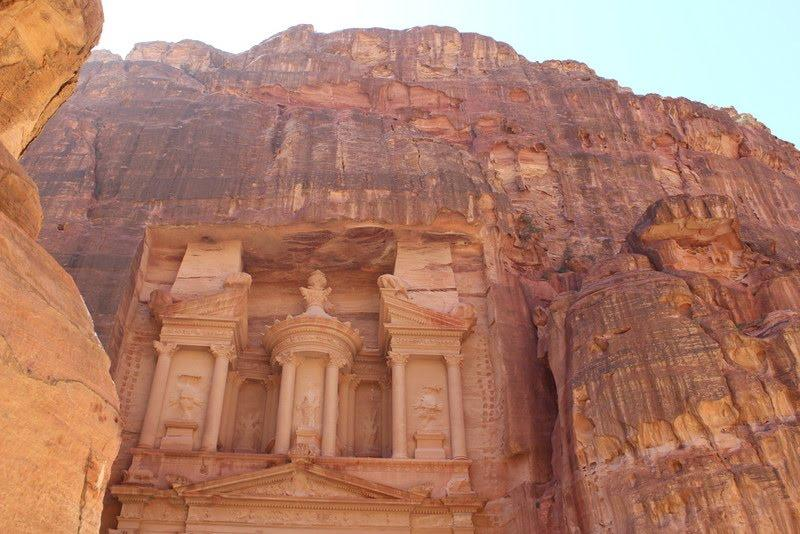
The city of Petra, a UNESCO World Heritage Site, was built at an almost inaccessible point, carving the walls of the Moses Canyon Valley. The Nabataeans, a band of bandits who plundered the caravans, created the region and used it as a logistics center and capital. B.C. The city, which began to be used by the Semitic tribes of northern Arabia in about 800 BC, flourished in the second century of the Roman settlement.
With the beginning of the Muslim period in the 7th century, the city began to live a life of its own, out of sight. Although there was a gradual settlement and development in a positive sense, the importance of the city started to decrease with the shipments made by caravans. Its existence was only known to Bedouins until it was discovered by the Swiss Ibrahim bin Abdullah (real name Johann Ludwig) in 1812.
This 2200-year-old ancient city is also known as the Rose City because of the color of the rocks. Every step taken, every corner turned, every path followed in Petra takes you to a new rock tomb or cult center. Everywhere is full of surprises; from time to time the architecture fascinates; Time makes one wonder how such a civilization suddenly disappeared without a trace. The temples, the amphitheater, tombs and reliefs carved into the sandstone rock blocks are all awe-inspiring. It is necessary to spare four or five days to properly tour Petra, which is spread over an area of approximately 100 square kilometers. In one day, you only get an idea of what kind of place it is. This magnificent canyon can be visited on the back of camels or horses or by carriage. Walking is the best way to feel the spirit of the place.
Films shot in rose-red Petra have an important place in the history of world cinema. Indiana Jones Final Adventure takes place in Petra.
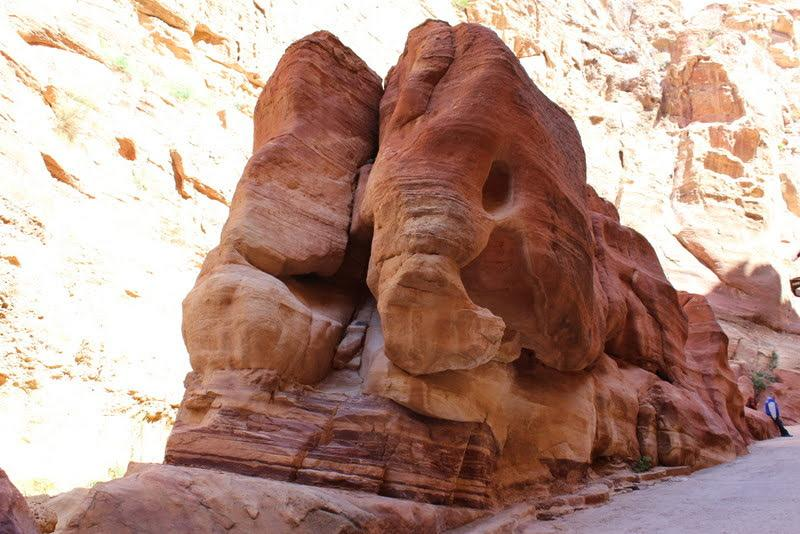
Petra Travel Guide
The Siq
As you enter the ancient city, you will see a deep ravine. There is a trail in this valley and it is called Siq. Along the way you will see water canals and dams that will prevent flooding. It is really amazing that such a thing was built for that period and the city met its water needs in this way.
The Siq, which was formed by the carving of sandstone cliffs separated by earthquakes by centuries of water floods, reaches a width of 5 meters in places and a height of 91-182 meters. Surrounded by rock masses of astonishing colors and beauty. The walls of the road running through the canyon look like they came out of marbling art in the daylight. The reliefs and decorations on the walls at intervals greeted the incoming convoys. The most famous of these is the Camel Caravan Relief, which is two camels walking opposite each other and the human figure in front of them.
The Treasury
Located at the end of the Siq road, the Treasury is considered to be the beginning of Petra. The first thing that catches your eye here is the red color of the rocks. The interior of these red rocks were carved by hand. If you look at the architecture of the Treasury, you can see traces of the Roman Empire. This is because they met and were influenced by the Romans when Petra was a mall.
None of the ruins in Petra are as spectacular as the Treasury. This magnificent structure, which fascinates visitors with its large columned entrance and carvings, is 39 meters high and 25 meters wide. This elegant work was created by carving the solid rose-colored rocks from top to bottom for years.
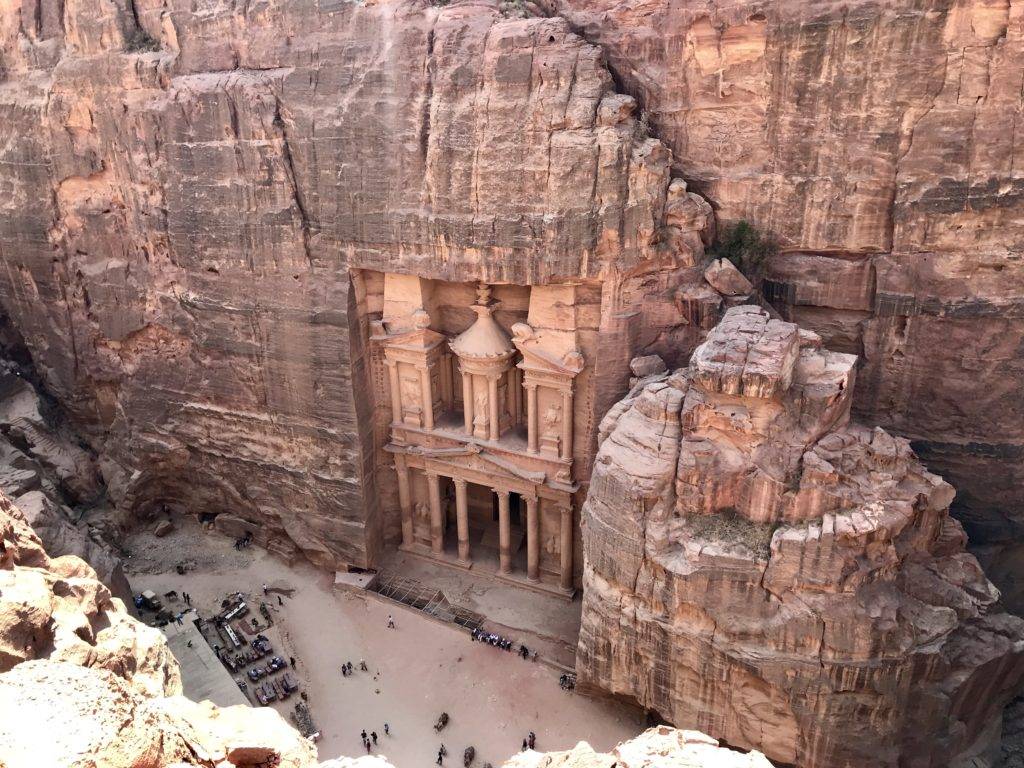
The Monastery
Attention! You have to climb 800 steps. But it’s worth it. When you come face to face with the Monastery, you will understand what we mean. Decorated with candles three nights a week, Petra has an incredible view. Right now; Monday, Wednesday and Thursday. We strongly recommend that you attend one of these evenings while visiting the ancient city of Petra. If you go here with your loved one, we can say that a very romantic moment awaits you.
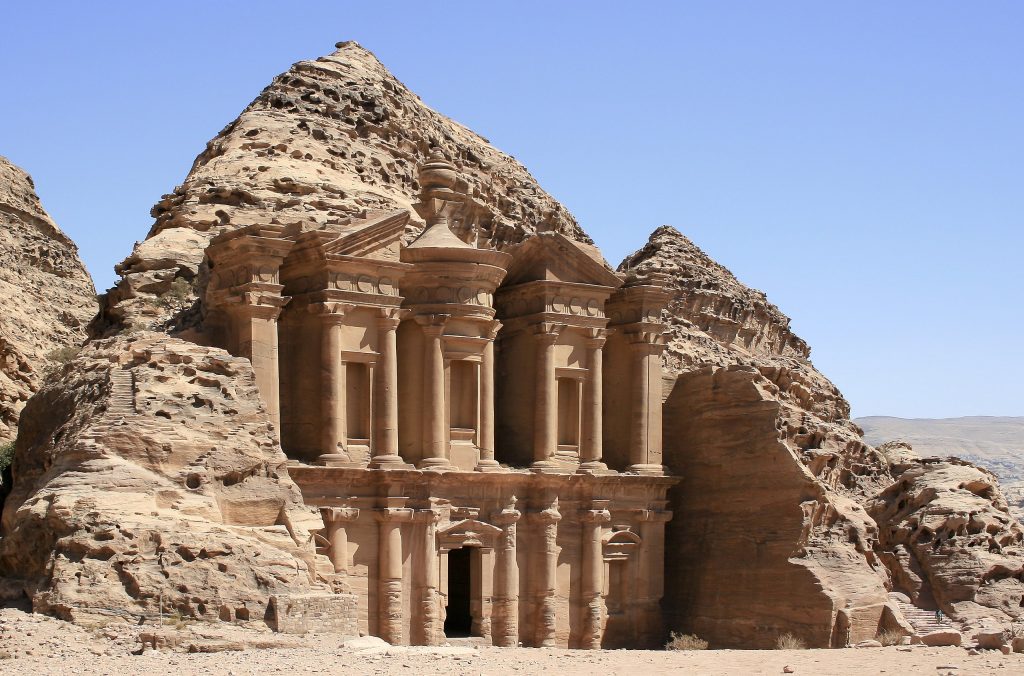
The Roman Amphitheater
One of the most impressive ruins of Petra, the Amphitheater was built in the 1st century by Hellenic architecture and has a capacity of 7,000 people. The theater, completely cut out of the rocks, was badly affected by the year of 363 earthquake.
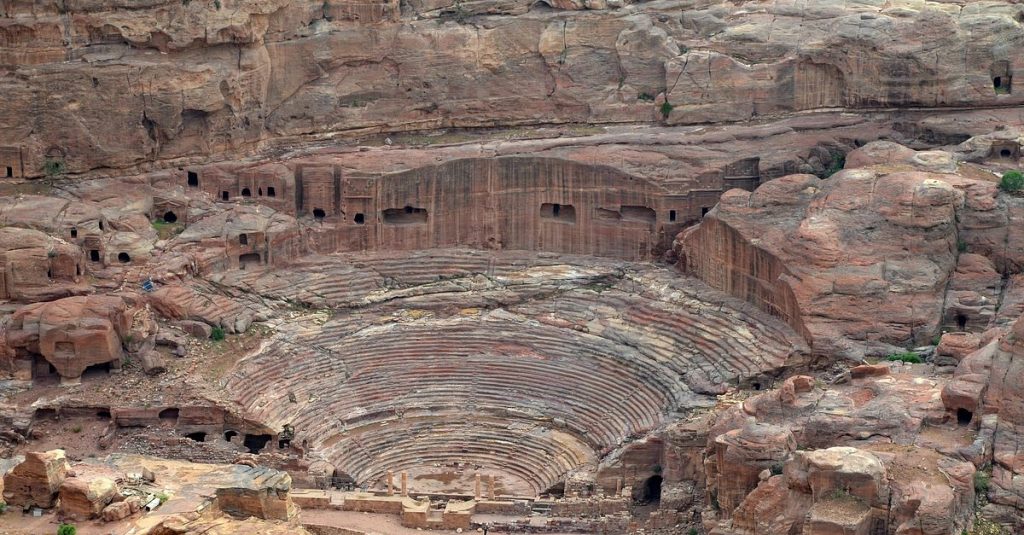
Roman Road
Petra Roman Road After the ancient theater, the columned road called Colonnaded Street, which is considered the center of the city, extends to The Arched Gate. The Nymphaeum, which is open to the public and adorned with rock-cut sculptures with architecture based on Hellenic mythology, lies in the shade of the only tree here. On the right, the Byzantine Church and the Winged Lion Temple are visible. Starting right after The Nymphaeum, the 6-metre-wide Colonnaded Street was a street where bustling crowds flowed into the center of this commercial city. Unfortunately, the earthquake in AD 363 destroyed the pillars erected along the street. The ruins of a market place selling spices and textiles can still be seen along the street. The Colonnaded Street ends with The Arched Gate, the arched structure of classical Roman cities. This was also the gateway to the holiest temple, Qasr Al-Bint Temple, where ceremonies were held.
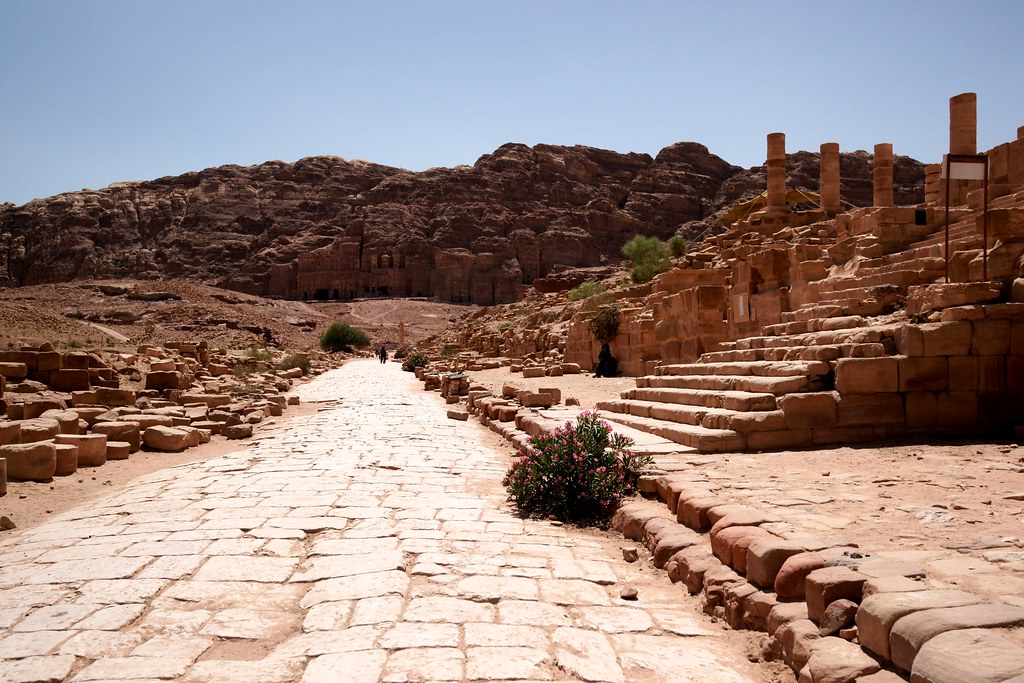
Royal Tombs
Opposite the Roman Theatre, on a large rock to the north of El-Hazne, there are 5 huge tomb facades. The royal tombs, called the Royal Tombs, are larger and more magnificent than other monumental tombs. The first of the tombs is the Urn Tomb, which was later used as a Byzantine church, the second is the Silk Tomb, which draws attention with its colorful sandstone rocks, the third is the unfinished Corinthian Tomb, inspired by Nero’s Golden Palace, the fourth is the Palace Tomb, which was built in the appearance of a Roman palace, the fifth is the Roman governor Sextus Florentinos. Sextus Florentinus Tomb. Each one deserves to be examined individually.
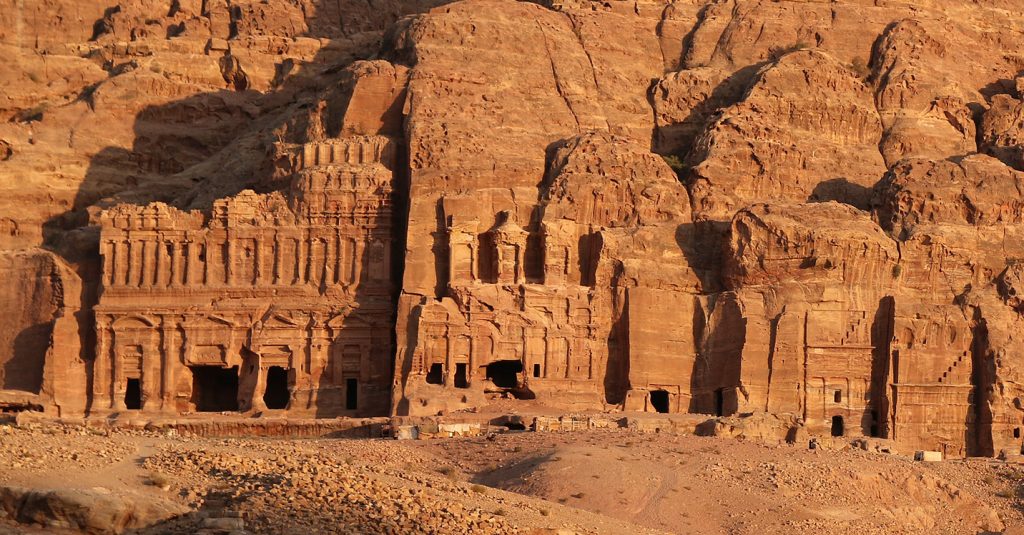
El-Deir Monastery
The largest structure in Petra carved into the rocks, El-Deir Monastery was built in the 1st century BC. Forty-seven meters wide, 40 meters high, El-Deir was once an important temple of the pagan Nabataeans. To reach the Monastery, which is one of the oldest known places of worship in Jordan and adorned with magnificently detailed mosaics, it is necessary to climb to the top of a hill of 800 stairs. Archaeologists found a heap of 152 scrolls, from which detailed information was obtained about daily life in Byzantine Petra.
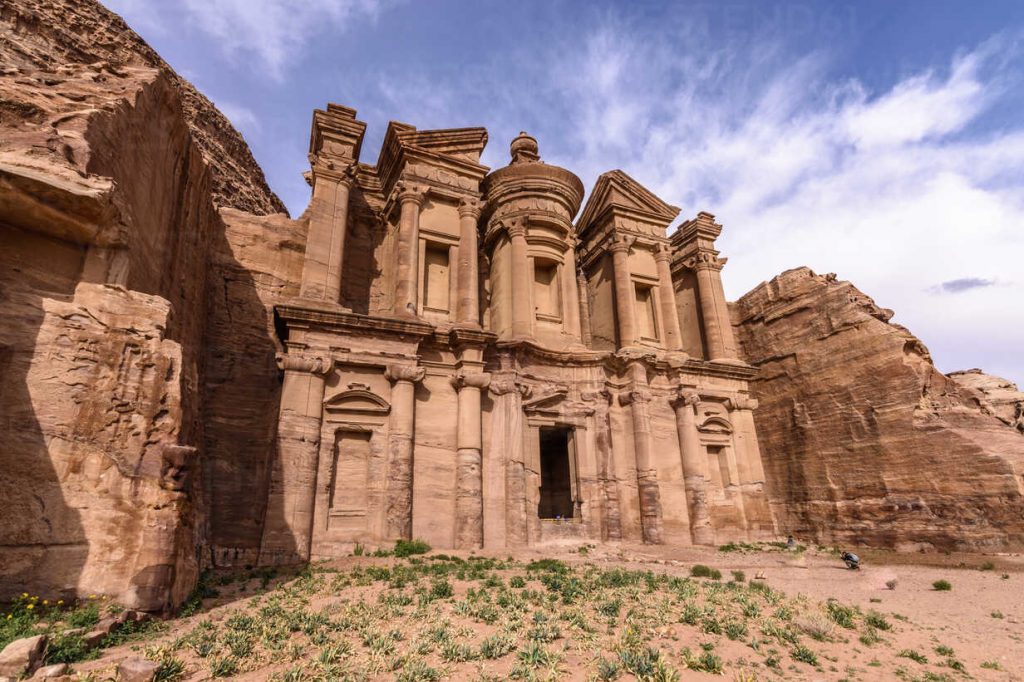
By the 4th century, when Christianity arrived, they offered sacrifices to the Nabataean gods Dushara, al-Uzza. This is one of the best places to see Petra from above. Petra offers all its richness to those who resist the stifling air of the desert heat. Petra has more than 800 monuments, tombs, altars, temples and structures. There is a tomb on the highest point of Petra, Cebel Harun (Harun Mountain), which is said to belong to Aaron, the brother of the prophet Moses. It takes 4 hours to get here. This lost city can be visited on foot as well as by horse, camel, donkey and phaeton. At the beginning of the valley, the new city of Petra was established and everything in this city is focused on tourism. Only camels, donkeys and horse-drawn carriages can provide you with a faster tour, as it will take days to fully tour the city, which is faced with the flow of tourists every day. When you get tired of visiting Petra, it’s easy to find a mount you can rent right away. However, I highly recommend bargaining. The Bedouins, who will provide you with these mounts, have been living in the depths of these canyons for thousands of years, making their living by farming. They are quite interesting with their unique clothing and appearance. Petra is the right place to see Bedouins, who originally had an incredibly rich culture. Cities belonging to ancient tribes have always fascinated me. Carved into the rocks and combining different religions, languages and cultures, Petra resists time, unlike her contemporaries who are captive to time.





